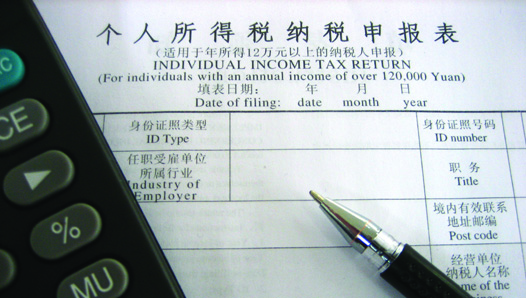China’s IIT reform nailed down
A glimpse of the new IIT Law
中国的IIT改革已确定
新的IIT法概览
 2018年8月31日,“全国人民代表大会常务委员会关于修改”中华人民共和国个人所得税法“的决定“ 终于在十三届全国人大常委会第五次会议上通过。该修正案公布了一项新的个人所得税(IIT)制度,该制度将汇和调度税制混合在一起,并在多个领域完善IIT法。这些变化不仅影响每个纳税人,也影响企业和其他市场参与者。与此同时,我们期待随后发布详细的实施细则(DIR)和其他相关法规,以完成新的IIT法及其制度。
2018年8月31日,“全国人民代表大会常务委员会关于修改”中华人民共和国个人所得税法“的决定“ 终于在十三届全国人大常委会第五次会议上通过。该修正案公布了一项新的个人所得税(IIT)制度,该制度将汇和调度税制混合在一起,并在多个领域完善IIT法。这些变化不仅影响每个纳税人,也影响企业和其他市场参与者。与此同时,我们期待随后发布详细的实施细则(DIR)和其他相关法规,以完成新的IIT法及其制度。
一组新的个人收入类别
从11个类别精简到9个类别,取消了“其他收入”
根据新的个人所得税法,应税收入类别的数量从11个减少到9个。值得注意的是,新税法除了在修订草案中删除了“企业或机构的合同或租赁业务所得”,“国务院财政部门确定的其他收入”也在最终修正案中删除。
“其他收入”的例子包括在商业推广或公司年度庆祝活动期间向非雇员赠送礼物,向他人提供担保的报酬,符合IIT延期待遇的商业养老保险的应税部分等。
总结
新的IIT法的颁布是中国长期IIT改革向前迈出的重要一步。 随后,将发布DIR和一系列法规,以确保2019年1月1日成功实施新的IIT法。我们期待即将发布的DIR和其他具体的IIT措施 。
修订法案是过去38年来最重大的突破。
 On 31st August, 2018, the ”Decision of the Standing Committee of the National People’s Congress on Amending the Individual Income Tax Law of the PRC” was finally passed during the Fifth Session of the Standing Committee of the 13th NPC. The amendment unveils a new Individual Income Tax (IIT) regime mixing aggregate and scheduler taxation system, and refines the IIT law in multiple areas. These changes impact not only the individual taxpayer, but also enterprises and other market players. At the same time, we are expecting the subsequent release of detailed implementation rules (DIR) and other relevant regulations which complete the picture of the new IIT Law and its regime.
On 31st August, 2018, the ”Decision of the Standing Committee of the National People’s Congress on Amending the Individual Income Tax Law of the PRC” was finally passed during the Fifth Session of the Standing Committee of the 13th NPC. The amendment unveils a new Individual Income Tax (IIT) regime mixing aggregate and scheduler taxation system, and refines the IIT law in multiple areas. These changes impact not only the individual taxpayer, but also enterprises and other market players. At the same time, we are expecting the subsequent release of detailed implementation rules (DIR) and other relevant regulations which complete the picture of the new IIT Law and its regime.
In detail
The amendment involves all major provisions in the IIT Law. Key revisions are summarised as follows:
• Introducing the “183-day” threshold in the assessment of resident and non-resident status of individual taxpayers;
• Revising income categories and implementing comprehensive taxation on wages and salaries, remuneration for labour services and manuscripts, as well as royalty income (i.e., “comprehensive income”) as the first step towards the mixture of aggregate and scheduler taxation system;
• Optimising tax rates structure and adjusting tax brackets to reduce tax burden for taxpayers deriving comprehensive income and business operation income, especially for taxpayers at low and middle income level;
• Establishing the framework of comprehensive deduction system by increasing the standard basic deduction and introducing specific additional deductible items such as children’s education, continued education, major illness medical treatment, housing cost and elderly care, etc.;
• Incorporating anti-tax avoidance rules, including arm’s length principle, CFC rules and GAAR provision, into the IIT Law;
• Transforming the IIT collection and administration from legal-person based system to natural-person based system through a set of new measures such as unique taxpayer identification number, information sharing and exchange among authorities, annual IIT reconciliation filing of resident taxpayers receiving comprehensive income and diversified obligations of withholding agents, etc.
 A New Set of Individual Income Categories
A New Set of Individual Income Categories
Streamlined from 11 categories to 9 categories with “other income” abolished
Under the new IIT Law, the number of taxable income categories are reduced from eleven to nine, among which “income from wages and salaries”, “income derived from remuneration for personal services”, “income derived from remuneration for manuscripts” and “income derived from royalties” are combined as “comprehensive income” for aggregate tax calculation purpose (applicable to resident individuals). It is noteworthy that in addition to the removal of “income derived from contractual or leasing operations of enterprises or institutions in the Draft Amendment, “other income determined by the fiscal authorities of the State Council” is also removed in the final amendment.
China’s IIT law and regulations historically provided specific examples for clarifying the scope of different taxable income categories. For income that was regarded as taxable but could not be easily classified into any specific category, as a general practice in the past, fiscal and taxation authorities would classify it as “other income” in the relevant tax circulars. Examples of “other income” include gifts to non-employees during business promotion or company’s annual celebration events, remuneration for providing guarantees to others, taxable portion of qualified distribution from commercial endowment insurance eligible for IIT deferral treatment, etc.
Removal of “other income” category from the IIT Law may produce uncertainty in future determination of income nature, particularly under such a rapidly evolving era driven by science and technology with new concepts and business models constantly emerging. Some uncertainties include:
- What the tax treatment would be for income previously classified under the category of “other income”;
- Whether income item which does not match the examples cited for various income categories could be deemed as non-taxable income;
- How taxpayers, withholding agents and tax authorities may handle the classification of income item which does not distinctly fall under any of the income categories;
Attention should be paid to further clarification of the above areas.
Final Adjustment to the Method for Determining Taxable Comprehensive Income
Under the Draft Amendment, taxable portion of income derived from remuneration for personal services and income derived from royalties were based on full amount received, while a 30% reduction was provided to the income derived from remuneration for manuscripts. In other words, the expense deduction provisions for the above three income categories under the original IIT Law were not retained.
The new IIT Law after final amendment has replaced the above by providing a uniform 20% expense deduction when calculating the taxable income of these three categories, which means only 80% of the full amount that has been received, is the taxable amount when calculating tax payable. On top of that, an additional 30% reduction can be applied on income derived from remuneration for manuscripts, i.e. the tax payable on such income is calculated based on 56% of the full amount received. This final adjustment is good news for taxpayers with multiple sources of these types of income or those mainly deriving income from manuscripts, personal services and royalties as it may significantly reduce the adverse impact of potentially increased tax burden resulting from the new aggregate taxation model on comprehensive income.
A New Comprehensive Deduction System
The new IIT Law also earmarks the initial establishment of a comprehensive deduction system, which is comprised of standard basic deduction, specific deductions, specific additional deductions and other deductions. Of these four types of deductions, the standard basic deduction and specific additional deductions have been the hot topics lately. Other than these two, specific deductions refer to statutory social security and housing fund contributions. Other deductions include deductible items provided by various IIT regulations such as commercial health insurance eligible for IIT incentive, employee contributions to corporate annuity, commercial endowment insurance eligible for IIT deferral treatment, etc.
We have also observed the following points in terms of deductions upon comparing the new IIT Law with the Draft Amendment:
− The standard basic deduction remains at RMB 60,000/year (RMB 5,000/month) without further adjustment;
− Specific additional deduction for housing expenses shall be either mortgage interest or rental expense; and
− Elderly care expense is added in as specific additional deductible item, which will further relieve the tax burden for bread winners caring for children and aging parents at the same time.
With the comprehensive deduction framework and items in place, next shall be the relevant regulations on the newly introduced specific additional deductions, detailing specific scope and criteria, amount and/or limit, supporting documents and timing of claim, etc. Meanwhile, it shall be equally noted as to whether the specific additional deductions will be available for claim simultaneously or progressively.
The newly established comprehensive deduction system paves the way for further deepened IIT reform in future. Going forward, dynamic refinement and adjustment to deductions would be worthy of attention.
 Statutory Taxation Principle Reflected In the New IIT Law
Statutory Taxation Principle Reflected In the New IIT Law
It has been observed that multiple revisions in the IIT Law relate to the authorisation to formulate relevant administrative regulations. Under the current IIT system, such authorisation has been directly granted to the fiscal and taxation authorities of the State Council, which, however, is not in line with the principle set by China’s Legislation Law. To comply with the Legislation Law and implement the statutory taxation principle, the new IIT Law centralises the authorisation to the State Council to formulate regulations and requires the latter to inform and report to the NPC Standing Committee on these regulations.
Other Highlights
There are more salient points in the new IIT Law that deserve close attention as well, such as:
• Tax tables applicable to comprehensive income and business operation income respectively remain unchanged as proposed in the Draft Amendment, and the top marginal rate for comprehensive income is still at 45%;
• Pre-tax deduction ratio for charitable donations is legislated;
• Tax withholding and reporting requirement for income categories other than comprehensive income and business operation income is also specified in the new IIT Law;
• Withholding agents are required to provide taxpayers with information on income reported and IIT withheld and paid;
• Two-step implementation of the new IIT Law remains unchanged, and salary earners will be able to enjoy the tax relief with more take-home pay starting from their October 2018 monthly salary.
With the release of the new IIT Law, calculation of tax payable for various income categories as well as major obligations of withholding agents and resident taxpayers is briefly illustrated in the Appendix.
The Takeaway
Promulgation of the new IIT Law is one major step forward of the long-term IIT reform in China. Subsequently, the DIR and series of regulations will be released to ensure successful implementation of the new IIT Law on 1st January, 2019. We look forward to the upcoming release of the DIR and other specific IIT circulars which will serve as important basis for interpretation and implementation of the new IIT Law.
Revision is the most significant breakthrough of the past 38 years. It can be anticipated that majority of the existing IIT rules and regulations will be reviewed and modified according to the new IIT Law. There will also be new IIT policies and regulations.
The IIT reform definitely will have significant impact on both enterprises and their employees (including Chinese and foreign national employees). Enterprises have been following the development during this revision period. From our communication with the enterprises, we identified the following challenges which they are most concerned with:
• Additional burden arising from tax filing and compliance risks under the new IIT regime;
• Corresponding amendment to enterprise’s compensation and benefits strategy, and relevant policies;
• Impact on enterprise’s current IIT planning scheme;
• Employee communication of the IIT reform’s impacts;
• Increase of labour cost;
• Impact on the worldwide tax burden of foreign national employees working in China;
• Impact on the current international assignment and business travel arrangement.
Timing is always critical for better preparation and smooth transition. In the meantime, enterprises can consider leveraging technologies to upgrade the functions of existing internal financial and tax system to fulfil the withholding obligation and achieve administrative efficiency.
Undoubtedly, the 2018 IIT Law amendment will be a landmark of China’s IIT development and there would be more going forward. We will continue to vigorously participate in the IIT reform, constantly monitor its development and share our insights in a timely manner.